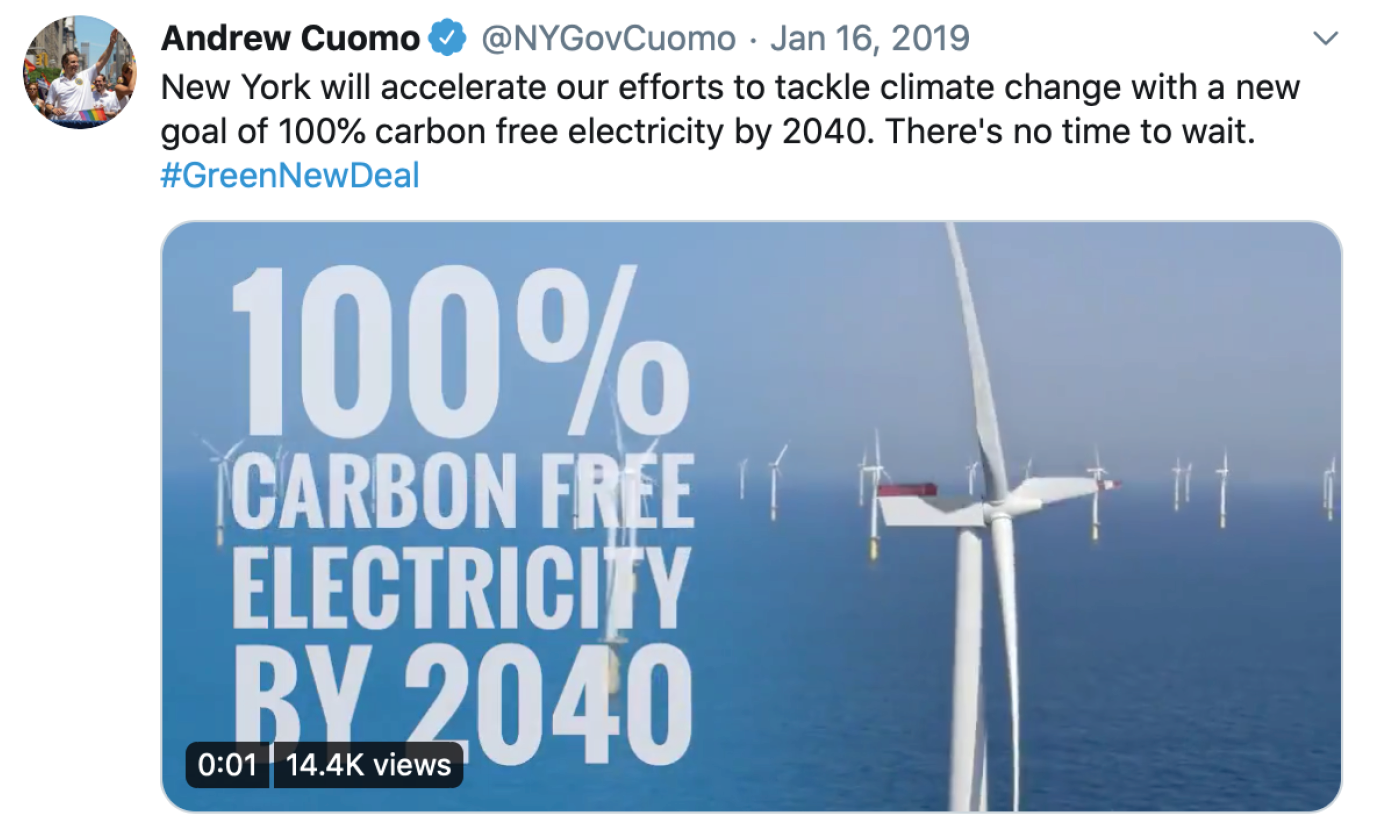Climate & Energy Communications Cheat Sheet 1/18/19

With much of the news (rightfully so) being consumed by twenty-eight (yes, 28!) days of the partial government shutdown, we’re sure it’s been easy to miss recent climate and energy news. But we are seeing an encouraging trend of Democratic governors using their “State of the State” addresses to promote aggressive new plans on climate and clean energy. With the Trump Administration continuing to move us in the wrong direction on these issues, it’s encouraging to see states lead the way. And as federal legislators and groups start to think about federal climate policy solutions, these states can provide a useful roadmap.

Democratic Governors Making Climate Moves
Governors Andrew Cuomo (D-NY), Jay Inslee (D-WA), Jared Polis (D-CO), and Michelle Lujan Grisham (D-NM) each made bold climate and clean energy commitments in their State of the State Addresses. Gov. Cuomo went as far as pledging 100% carbon-free electricity by 2040, an aggressive plan utilizing renewables as well as other zero-carbon sources like nuclear and carbon capture. Cuomo’s tech-inclusive plan not only creates more clean energy jobs throughout the state but will also seek to build a broader coalition that includes labor groups in its planning. Cuomo’s initiative is pragmatic and flexible, but at the same time modern and thoughtful, providing a roadmap for federal legislators as they seek to create a federal Green New Deal.
Talking Points
- With the Trump Administration moving America backward on climate policy, it’s great to see Democratic governors leading the way forward.
- As Federal policymakers begin to hash out specifics to major climate and energy policy legislation, they can look to states like New York, California, Washington State, and others as guideposts. These states have been early adopters of policies that embrace a wide range of carbon-free technology to aggressively lower emissions. We go a bit more in-depth about big steps that leaders in these and other states have been taking on climate and clean energy here.
- States are also recognizing that 100% clean power is critical, but not sufficient. For example, Governor Jay Inslee of Washington State went beyond asking for a carbon-free electricity sector by 2045 and called on state legislators to enact a clean fuel standard as transportation emissions in 2018. That sector was one of the state’s most predominant sources of emissions.
- Two important themes are emerging from these governors’ plans: first, each state has different assets, needs, and workforces, and there is no one-size-fits-all solution for every state. Second, they all recognize the importance of setting firm and ambitious emissions-reduction targets without locking themselves into specific technologies that exclude other helpful options.
- That flexibility will allow them to embrace changes in technology and new innovations while minimizing disruptions in the transition to a carbon-free economy.
ICYMI
In November, right after the midterm elections, Vox’s Umair Irfan reported on the potential successes and challenges some of these climate-focused governors’ faces and what that means for the United States at large.
Subscribe
Get updates whenever new content is added. We'll never share your email with anyone.

